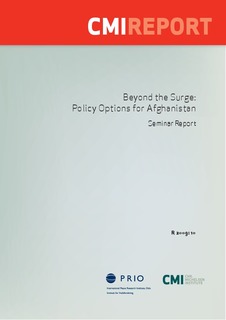| dc.description.abstract | The surge in the US presence in Afghanistan, announced by President Barack Obama soon after taking office, is unfolding rapidly. What does this ‘surge’ signify? Is it a commitment to achieve what Obama calls ‘the achievable objective’ in US strategy towards Afghanistan, namely to eliminate Al Qaeda’s base in the region and ensure that the organization will not be a source of terrorist threats to the West and its allies? Or is it the beginning of an exit strategy from a controversial war, aiming to gain a position of military strength from which to negotiate a favorable compromise? In a longer time perspective, is it a step to secure a strategic US presence in the region, or a prelude to strategic retrenchment? What are the implications for Afghans who are deeply concerned about the escalating violence in their country, disillusioned by the pace of reconstruction, and apprehensive about the future?
CMI and PRIO recently invited a small group of experts to a workshop and a public seminar in Oslo to assess current developments in light of these larger issues. The discussion centered on three main themes: the role of the US and the UN, the role and perceptions of Afghans, and the dynamics of a negotiated settlement. This is a report from the seminar. | |
